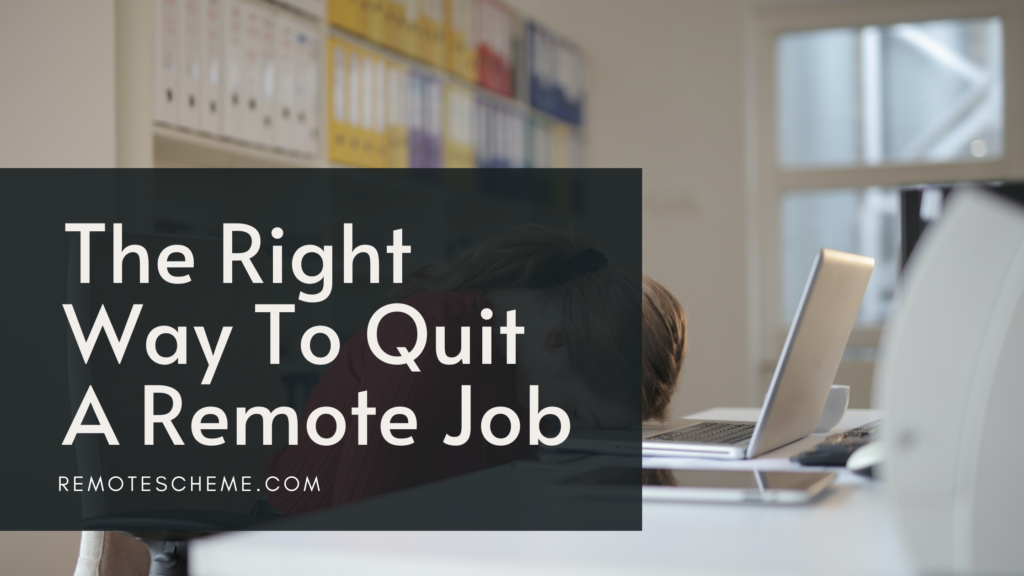Quitting remote roles can be a life-changing decision. However, it’s sometimes necessary for personal or professional growth.
That said, quitting remote roles has the same principles as quitting a traditional office job.
As part of the procedure, you should tell your manager of your intent to leave ahead of time. It also entails managing the transfer of duties and responsibilities. Finally, you’re responsible for following up with human resources.
5 Steps To Take In Quitting A Remote Role
It might be challenging to leave a remote job, but it’s important to handle the process professionally.
Here are five steps to take in quitting a remote role:
#1. Write A Resignation Letter
Your resignation letter should state your reason for leaving and your last day at work. It must be submitted two weeks before your last day.
#2. Schedule A Meeting
Request a meeting with your superior to inform them of your decision to resign.
#3. Discuss Transition Plans And Wrap Up Loose Ends
During your meeting, discuss the transition of your role. Additionally, make sure you complete any pending tasks before leaving your position.
#4. Thank Your Employer And Colleagues
Give and express your gratitude for having the opportunity to work with the company.
Additionally, thanking your co-workers for all the assistance you got while working there is a good touch.
#5. Follow Up With HR
Follow up with Human Resources to ensure that all details related to the termination of your employment have been processed and finalized.
What Should I Consider Before Quitting My Remote Role?
Quitting a current role involves a lot of planning. Consider your current financial stability. Additionally, be sure you already have future job prospects, and consider how your resignation can affect your career path.
Should I Quit My Remote Role In Person Or Over The Phone?
Communication in remote roles typically happens virtually. Ideally, you would quit your position through a virtual meeting or a phone call.
What Should Be Included In My Resignation Letter?
Similar to any other resignation letter, it should include the reason for your resignation, the date you’re submitting the letter, and your last day at work. A message of gratitude for your company would be a nice touch.
What Is The Appropriate Notice Period For Quitting A Remote Role?
As with any traditional job, it’s only professional to give at least a two-week notice when quitting. Note, however, that this may vary depending on your company policies, your contract, and the nature of your role.
What Steps Should Be Taken During The Transition Of Roles And Responsibilities?
During your meeting, make sure to discuss with your manager the steps to take in transferring your responsibilities.
You can document any information you may need to share. Offer your assistance for a smoother transition.
Is It Okay To Quit A Remote Job Without Notice?
No, it’s unprofessional to quit a remote job without notice. Note that this may negatively affect future job prospects and your reputation in your career industry.
Quitting Gracefully
Quitting a remote role can be a challenging process. With the right approach, it can be done professionally.
It’s important to inform your employer, give sufficient notice, handle the transition of your responsibilities, and follow up with your HR.
By following these steps, you can ensure a smooth transition for both yourself and your employer.




